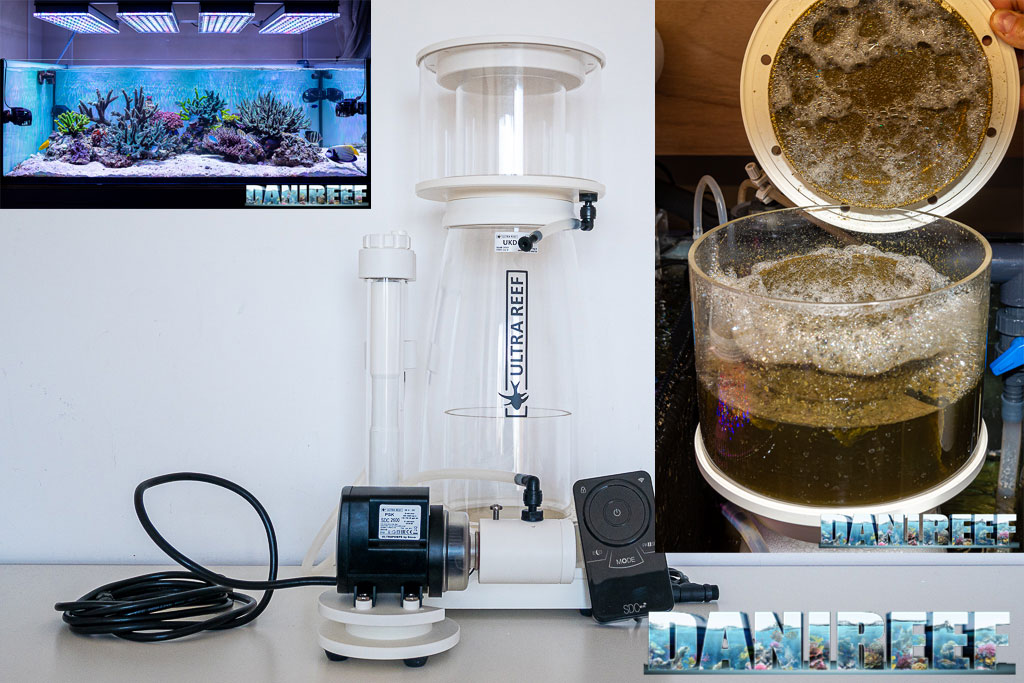
We tested this skimmer for a long time, with a forced break due to the CoronaVirus, and Jonathan and I were thrilled. In this case we measured 1,300 l/h of air aspiration. It’s the third skimmer that comes close to that.
We’ve followed UltraReef since it began, when we met for the first time at Aqua Beach in Cesena in 2012. Since then, a long time has passed. This new skimmer, UltraReef Typhoon UKD 200, is not only completely different from its previous samples but it works perfectly. I know, I know, we often say this, but we’re interested in trying tools that we’d love to have in our aquariums, so we’re selective about what we test. Then, how well they perform is something we intend to assure with our reviews.
Even in this case we measured a water rate of… well, you will see on page two! We’re so thrilled because it’s essential data for the correct management of the aquarium, even if the companies don’t release it anymore.
The skimmer is very well built, solid and heavy. The skimming pump is external and leaves more space inside the body of the skimmer for the bubbles to thicken, moreover it’s helpful for cleaning the tool.
Technical characteristics of the UltraReef Typhoon UKD 200
| Skimming pump | Sicce PSK-SDC 2600 DC24 |
| Volume of treated water | from 700 to 2.300 l/h |
| Volume of treated air | from 300 to 1.400 l/h |
| Consumption of the pump | from 10 to 36 watt |
| Dimensions | 290x390x600 mm |
| Suggested water height in sump | 18-22 cm |
| Price | 1.019 euro |
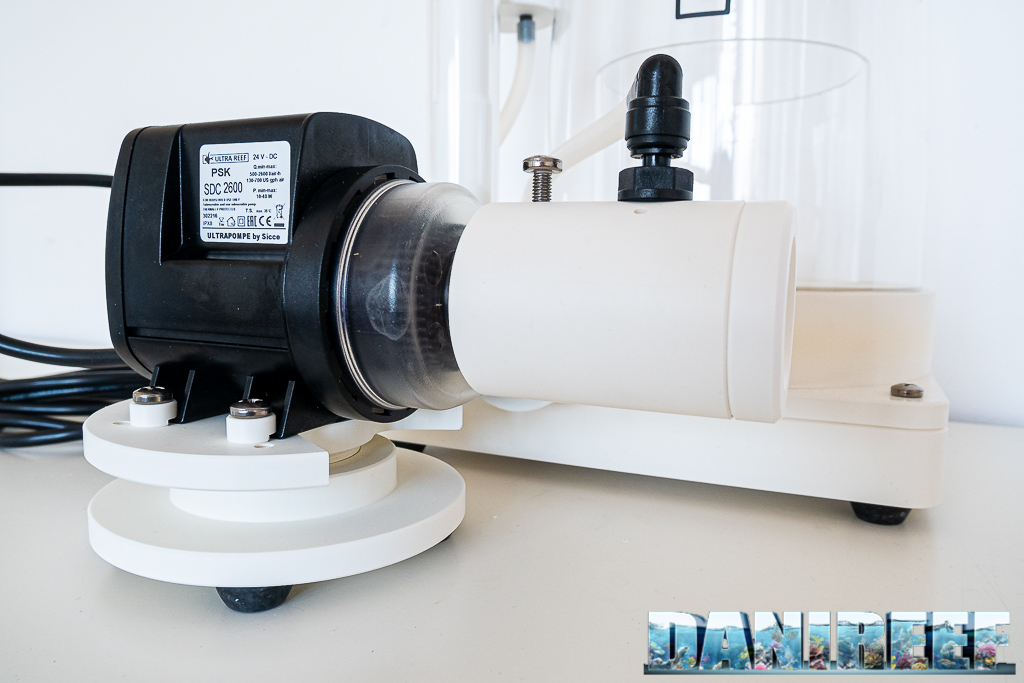
Construction
The construction of the skimmer is excellent, it’s very difficult to imagine something better. Sure, the whole ensemble is quite heavy, if you’re searching something more lightweight this muscular skimmer is not for you. But look at it: it’s flawless, just look at the base of the skimming pump. This detail alone is enough to make you understand the quality of this object.
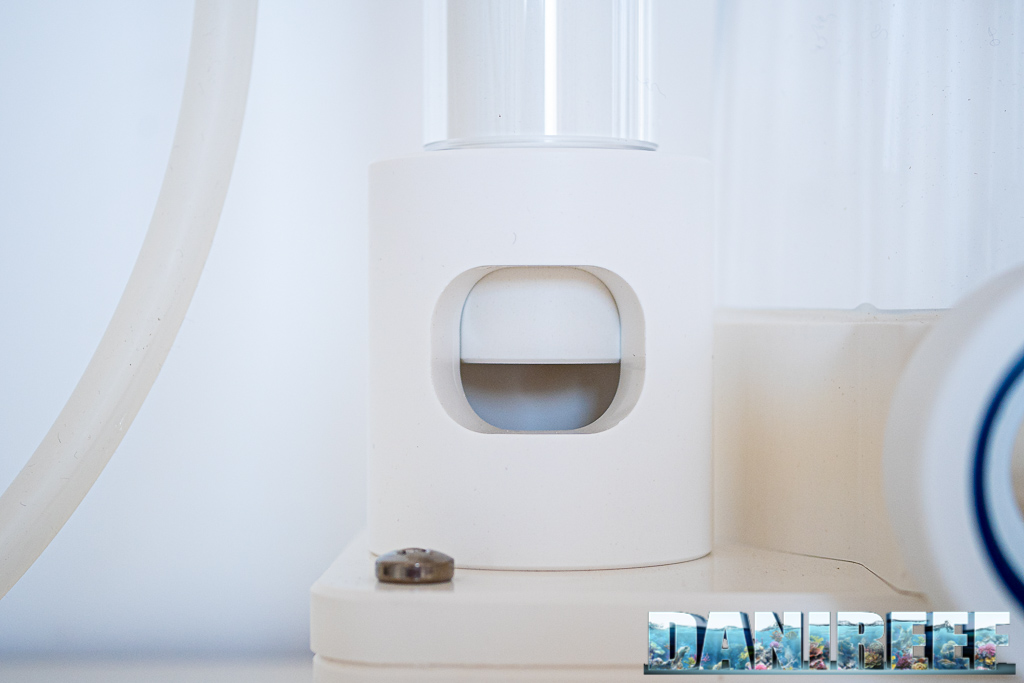
Speaking of functioning there’s a classic set, maybe a little old style. In fact, now many skimmers are built with the pump inside in order to take up less space, but the quality of their skimming is inferior to the external pumps, because of the difference in available space. The skimmer works by pushing air and water together inside the main body where they’re moved concentrically until the bubbles don’t get into the glass. The skimming pump is a Sicce PSK-SDC 2600 DC24 that takes water from a few centimeters from the bottom of the sump.
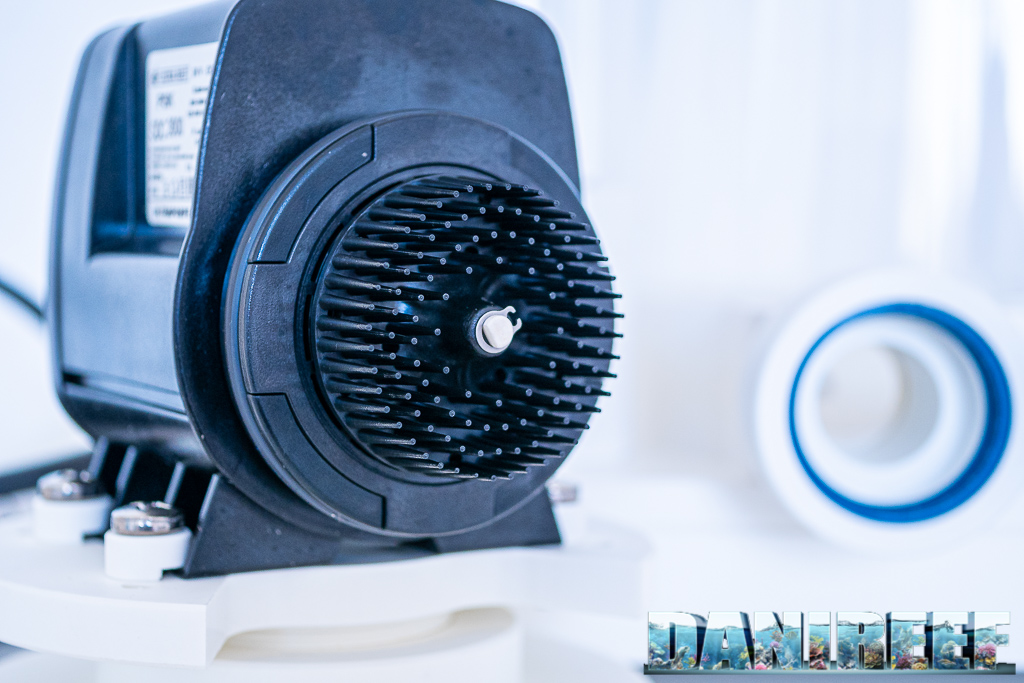
The body of the skimmer has a diameter of about 20 cm that decreases thanks to the conical shape and it’s 60 cm high, glass included.
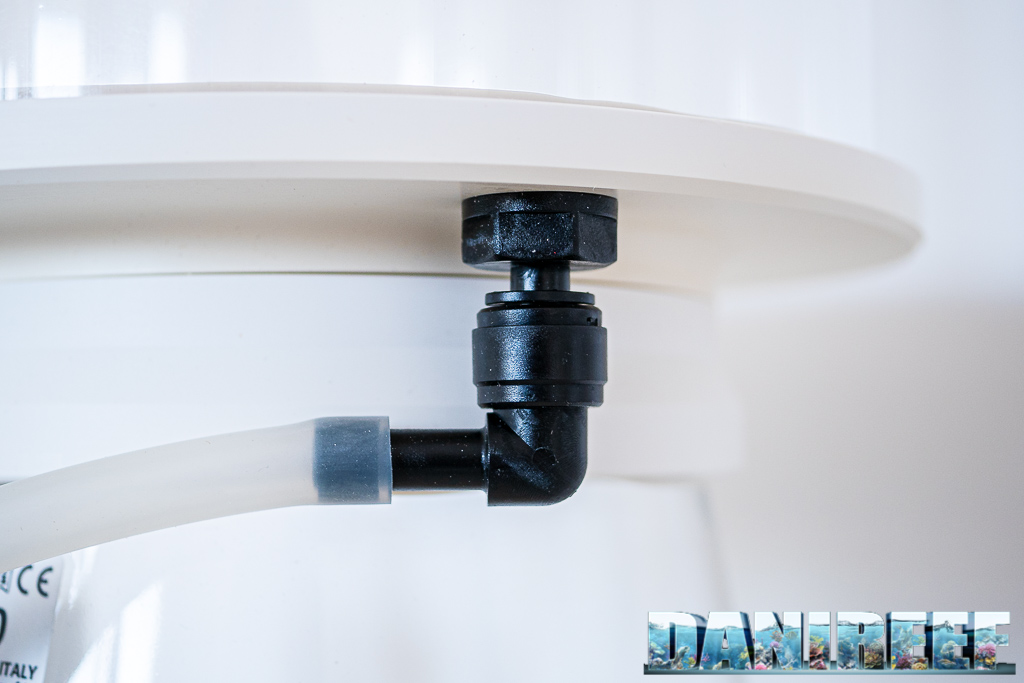
In bottom of the glass there’s a hole, closed with a John Guest join, from where the skimming fluid can be ejected. We would like to have the classic pipe with the sink, because we’ve tried one and we noted that this configuration is more practical. But it’s no big deal, and it’s easy to replace both in terms of speed and cost.
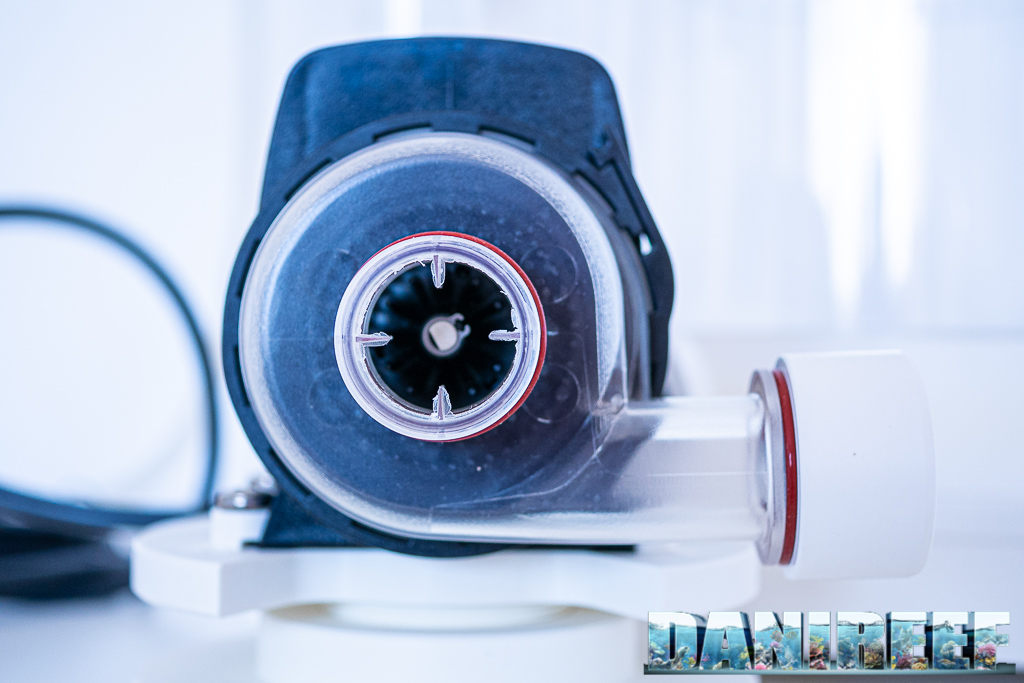
The assemblage of the UltraReef Typhoon UKD 200 is simple and allows a practical and complete disassembling and reassembling at home, thanks also to the lack of a diffusion plate. The extreme simplicity is granted by the choice of placing the pump externally and inputting water and air with circular motion.

The glass is light, and can be easily inserted in its base. You only have to place and push it a little bit. This Typhoon has the EasyFlip system, a system through which we can extract the glass with one hand (very useful, you can see it in the video). Moreover, the glass itself can be completely disassembled for easy cleaning.
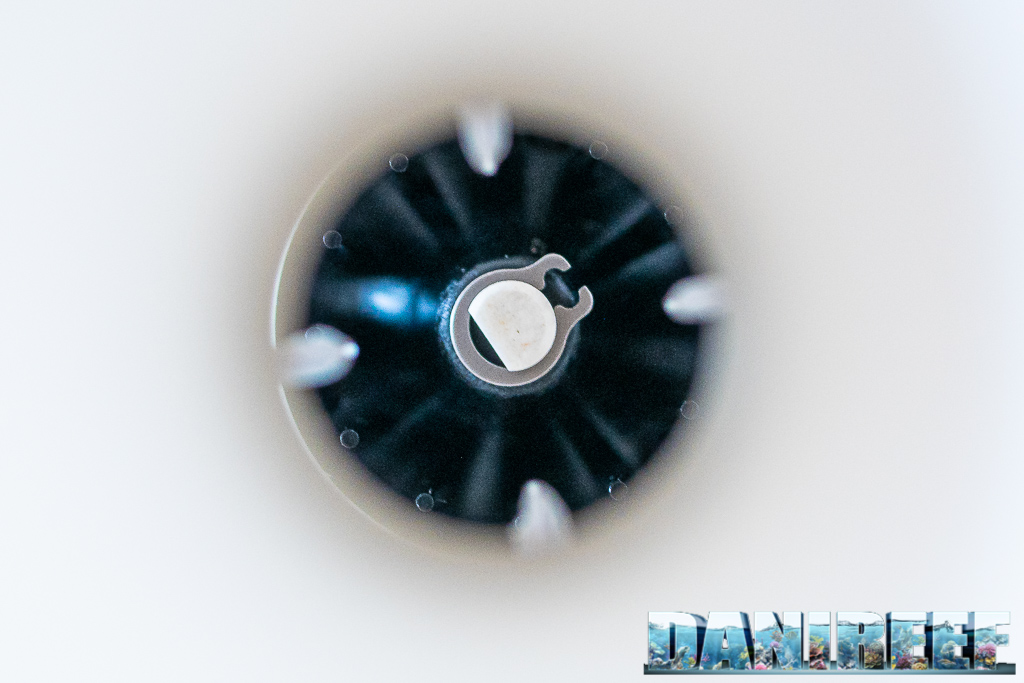
Pump and regulation
The pump, ad we have said, is a Sicce PSK-SDC 2600 DC24, designed for a maximum rate of 2,600 l/h in normal situations. It’s an adjustable and direct current pump. We did all the measurements using the pump at its maximum power.
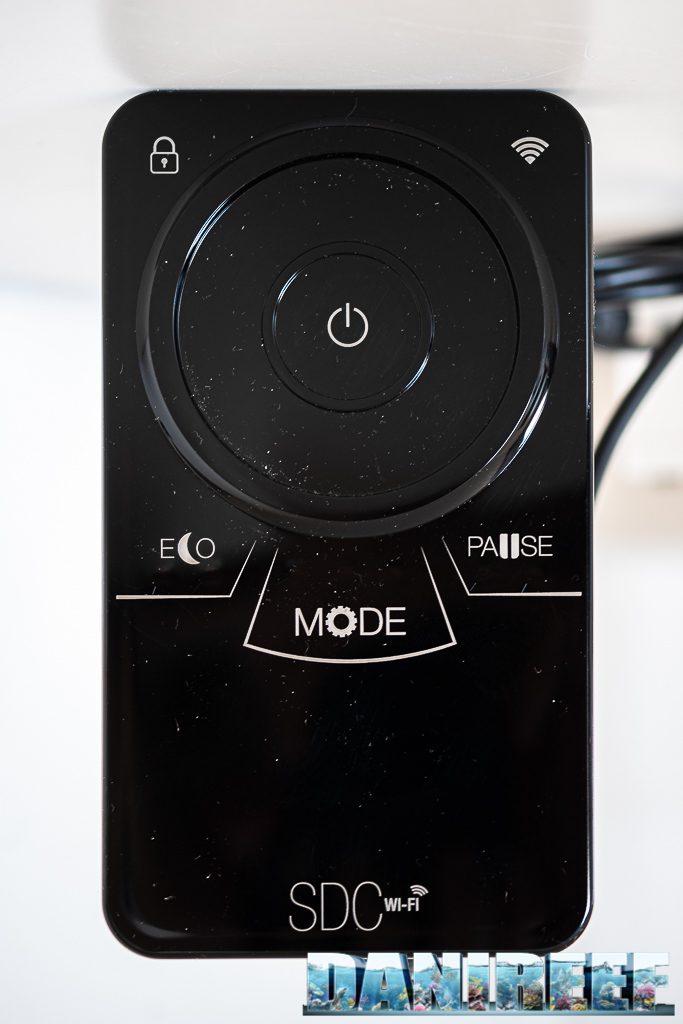
You have the controller to change the flow rate of the skimming pump and make it adjust to your aquarium. I usually prefer to keep it on maximum power but I understand that for others this is an important feature. You can also log into the Sicce’s cloud system and control the pump through the specific app.
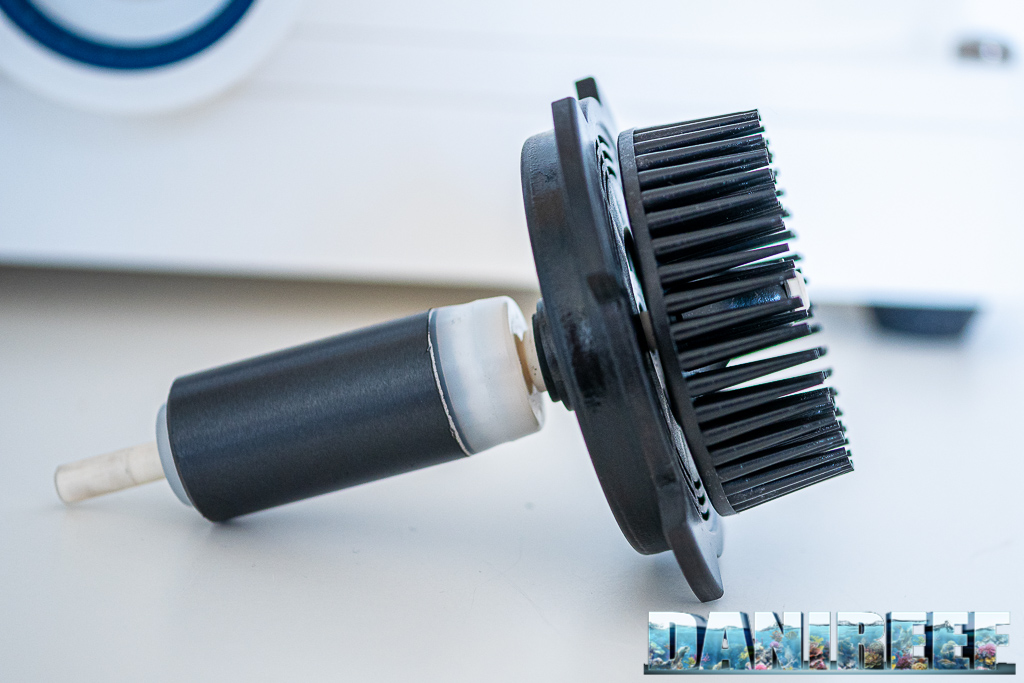
The UltraReef Typhoon UKD 200 is available in a monopump configuration, so we didn’t have to worry about the amount of incoming water and air, or their relationship. In this case UltraReef has already decided for us. The suggested level to keep in sump is between 18 and 22 cm.
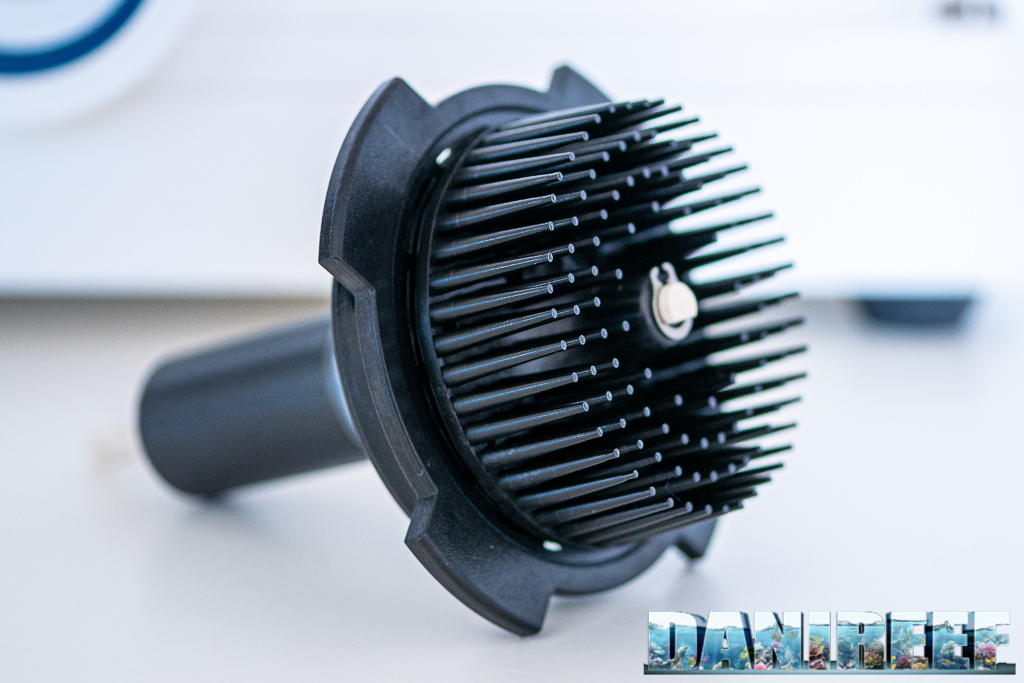
The external pump has the drawback of the occupied space in sump in face of a better maintenance. Moreover, UltraReef informs, the external supply allows you to limit the losses thanks to an input channel. The extreme comfort of the external pump is most appreciated the moment you have to clean it. It can be easily extracted and cleaned. This is also useful if the pump gets obstructed. With a few minutes of maintenance you can start skimming again.
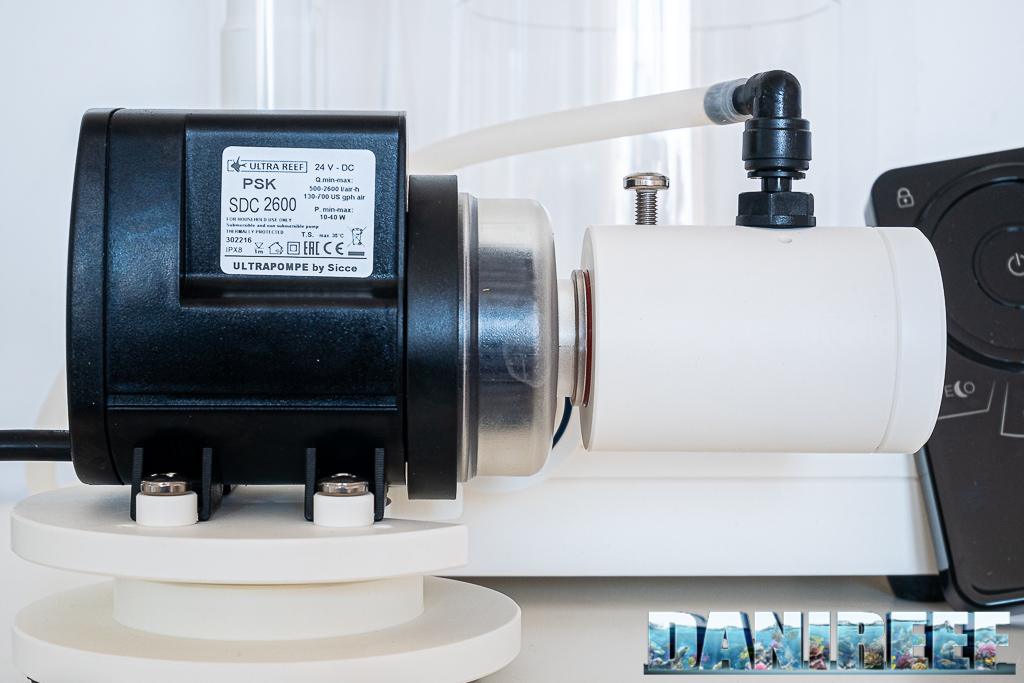
In order to change the calibration of the skimmer you have to turn the pommel over the drain, which determines the level of water inside the body.

Set up
The set up is very easy. It’s impossible to make mistakes.
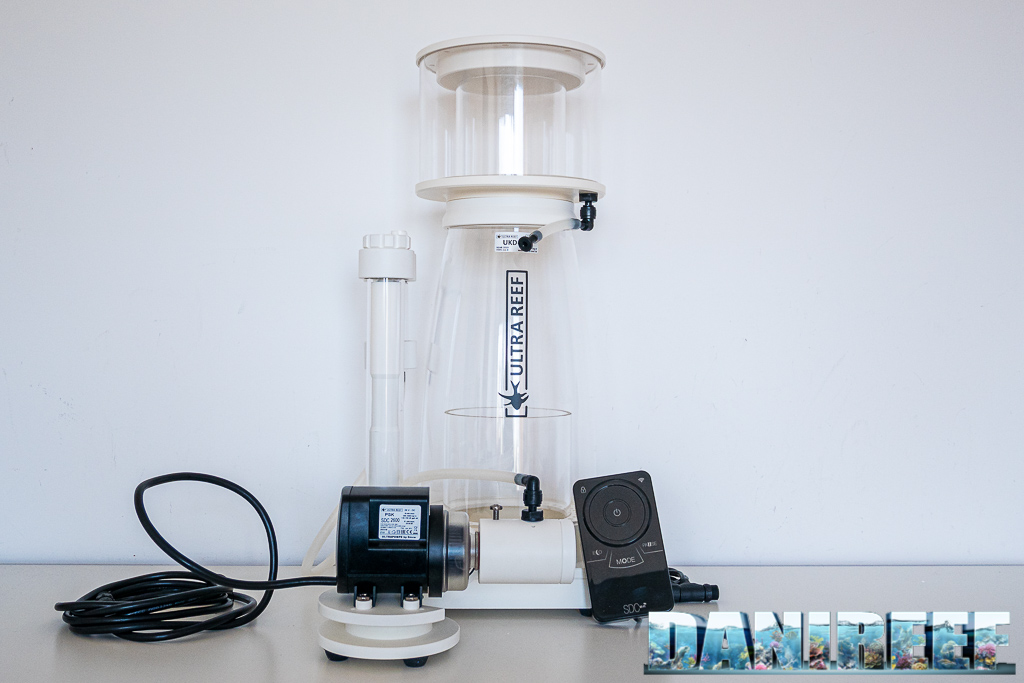
Functioning
The skimmer really works hard. It foamed almost immediately. The foam, thanks to the configuration we’ve adopted, fills the body completely, starting just a few centimeters from the bottom. The foam is thick and the bubbles are very thin, as you can see in the following picture. Probably it will be even more evident in the video. Visually speaking, the skimming and the color seem perfect.
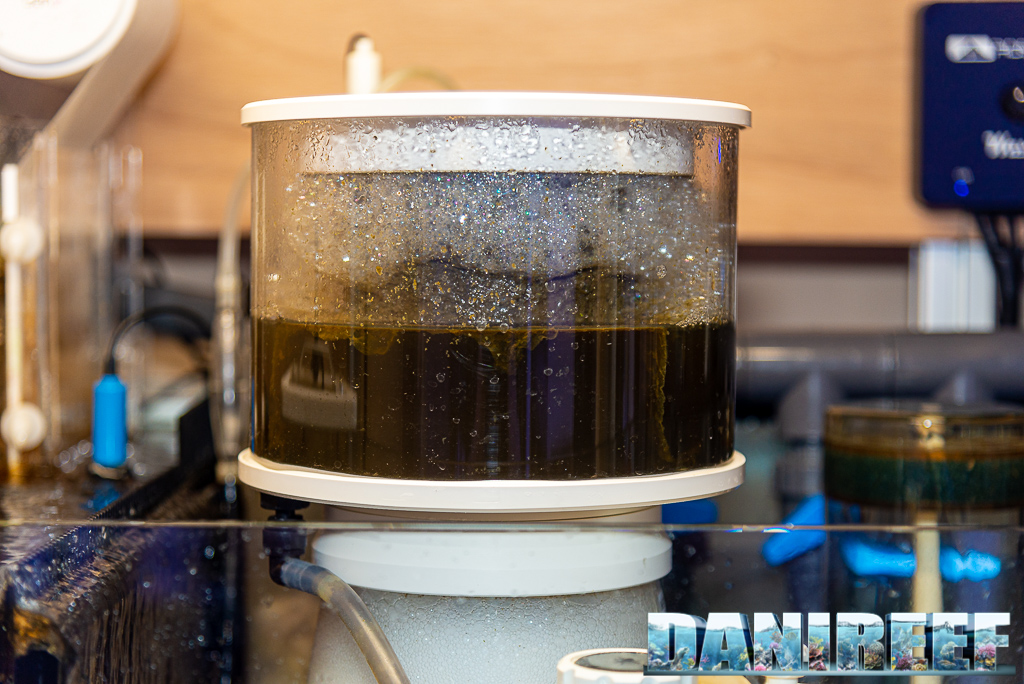
The suggested level in sump is between 18 and 22 cm, suits perfectly the average of 20 cm that we always suggest. In our case (and all our measurements take account of this data), we had the bulkhead at 21 cm of height, so the skimmer works with an hydraulic head of 21.4 cm, more or less. UltraReef says that this height guarantees the perfect balance between the water pressure and the sucking of the air. Obviously (we repeat this for the ones that don’t know) they’re in balance because the skimmer has been built this way. Another detail we would like to underline is that the skimming strongly depends on the salinity of the water: the higher the salinity, the better the performance of the skimmer. We’ve always kept ours at 35 per one thousand.
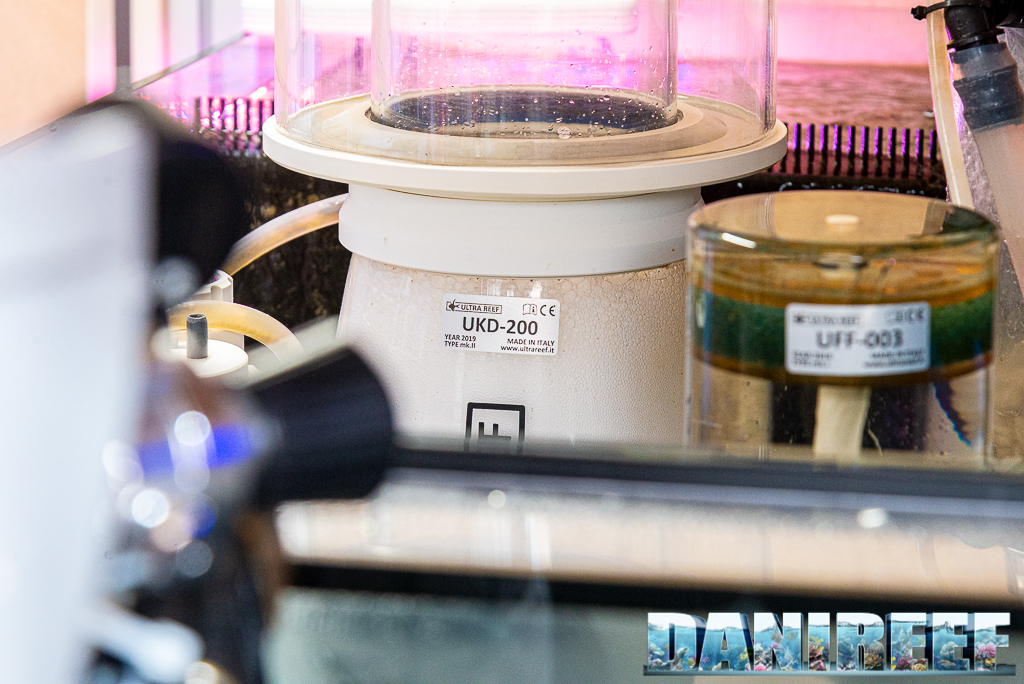
After five months of continuous use and a slowdown due to the Corona virus, Jonathan can affirm he’s impressed by the UltraReef Typhoon UKD 200 skimmer. Now we’ll see what we have measured and then we’ll see his personal comments.
Performance and measurements
Ultra Reef declares that his skimmer has a rate of treated water of 2,300 l/h and a rate of treated air of 1,400 l/h. Then the relationship air/water is 0.6. These numbers can change based on a lot of different variables, among which are the height of the water in the sump, the height of the water column inside the cylinder and the salinity in particular.
Water rate
The UltraReef Typhoon UKD 200 is part of the series of skimmers with a bottom drain, similar to most of the models on the market nowadays. This feature doesn’t allow us to measure the treated water directly. But we found the way to overcome this problem and measured the water in the following way: we filled the container to 21 cm, as the producer said, using fresh water. Then we set the pump on the bottom, connecting the air intake as we were in action, knowing that the performances are different in fresh water, but the number can be useful as a yardstick. So we measured:
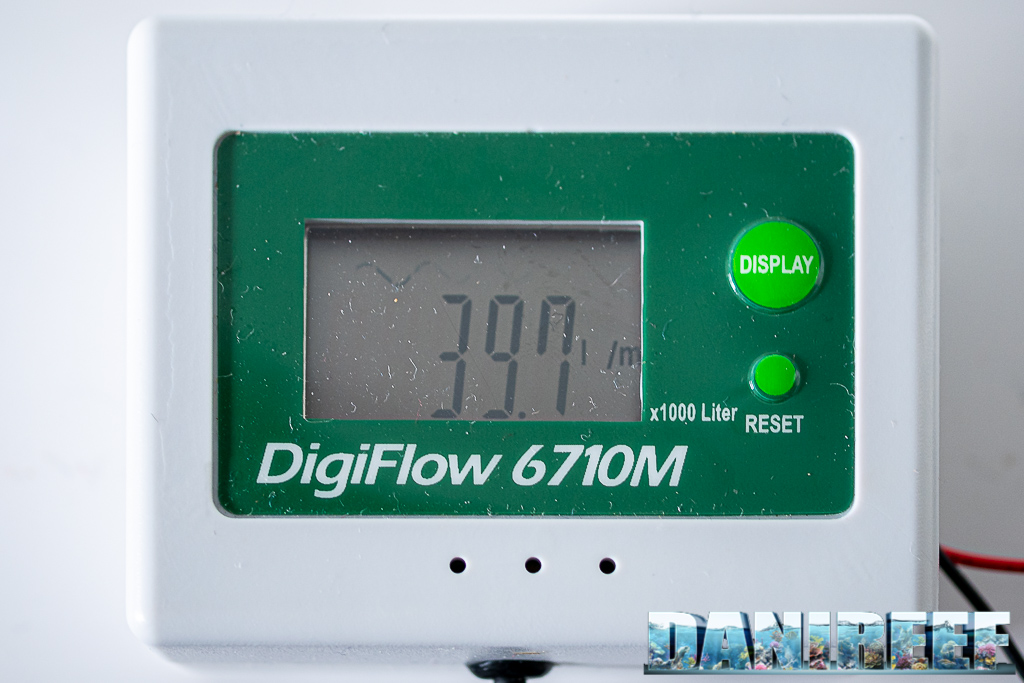
39.7 liters per minute, which is 2,382 liters per hour of water rate. In salt water this value can be higher, but once the pump is inserted into the skimmer it could go down due to the shape of the skimmer itself and to the interaction of the bubbles, that in fresh water don’t matter much. The value is even higher than the one given by the builder, Chapeau. For now we keep this value that we’ll use for a comparison with other skimmers.
Air rate
For the air we used another flow meter, a professional ItalControl PSM-21, that measures from 250 to 3,000 l/h of water.
For the first time we measured the air also after the muffler, and got a value of 1,150 l/h of sucked air. A very stable value.
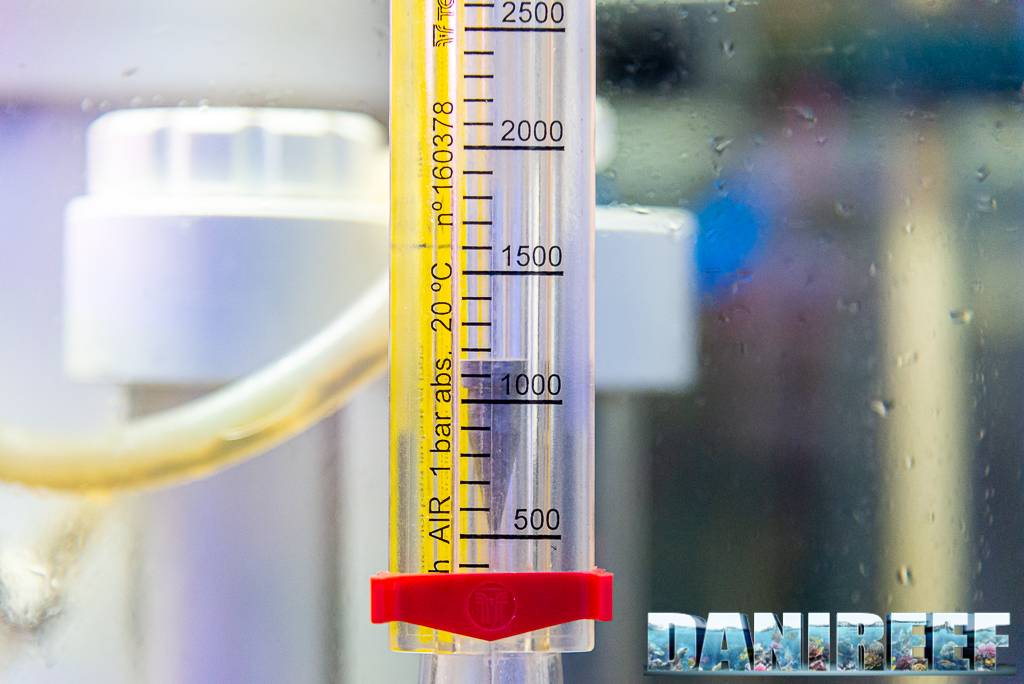
But in order to do a comparison with other skimmers, we also had to measure the sucked air connecting directly the skimmer to the pump, and we measured a little more than 1,300 l/h of air.
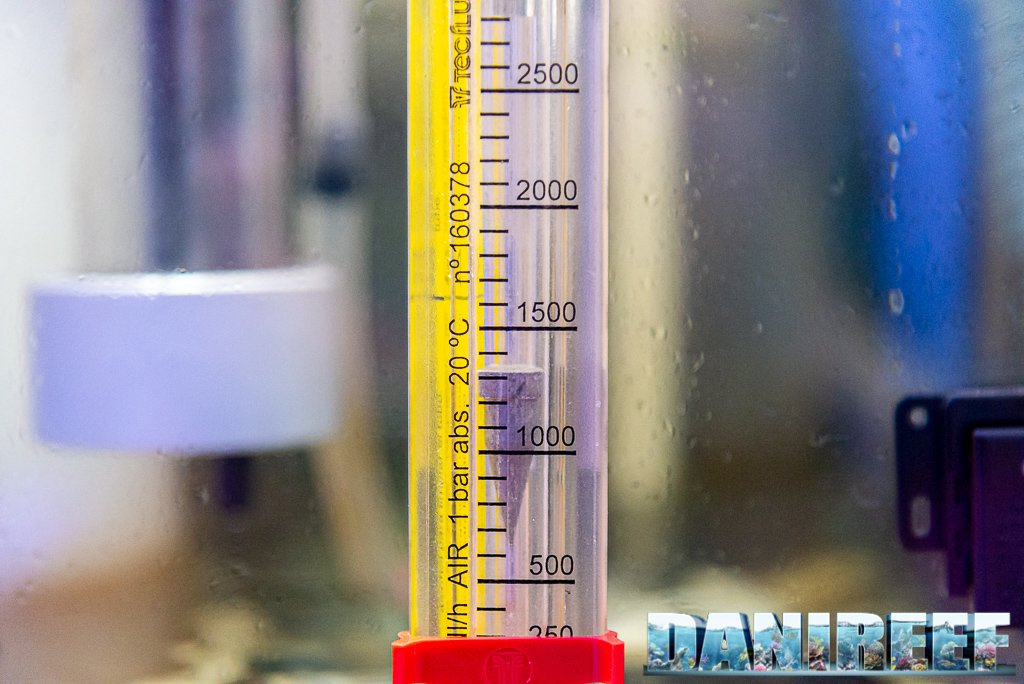
Another time, we have a top quality value. Even Ultra Reef obtained a very important result, and our personal record here on DaniReef.
The relationship air/water is 1320/2382=~0.55
Noise
The skimmer is very quiet. It probably depends on the mass of the skimmer and on the rubber pads. We did our three measurements, all at one meter of distance from the aquarium and from the sump. We detected the following results:

Sound pressure at 1 meter with all the tools switched off and closed doors: 44.5 dB
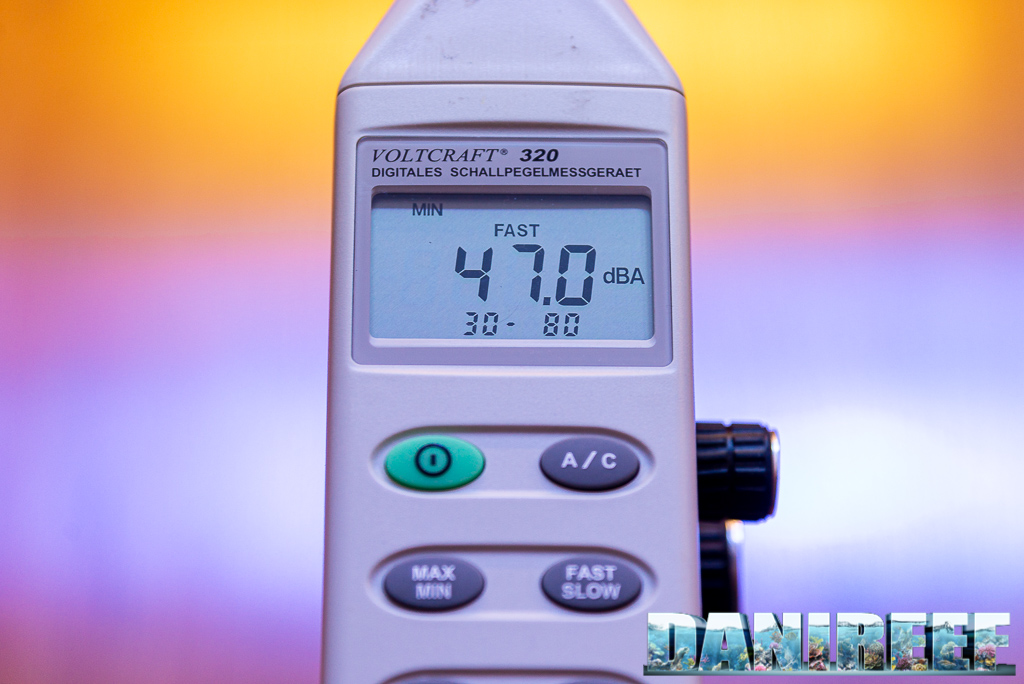
Sound pressure at 1 meter with the skimmer switched off and open doors: 47.0 dB
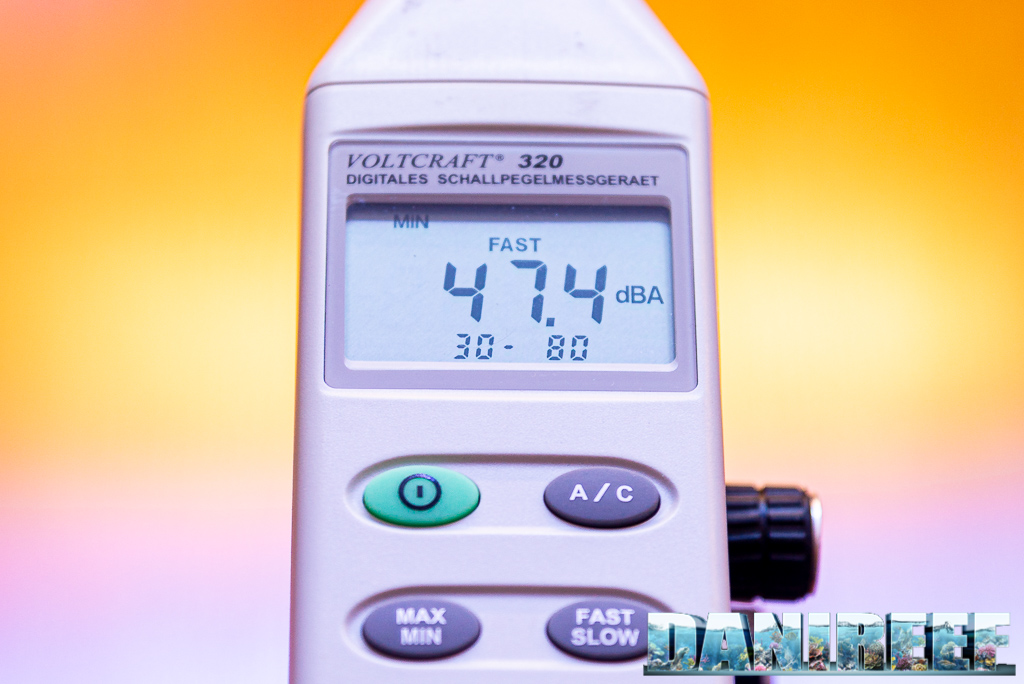
Sound pressure at 1 meter after the skimmer switched on: 47.4 dB
The difference of sound pressure measured with the skimmer on and off is 0.4 dB, practically 0. A very silent skimmer, even if the system was pretty noisy.
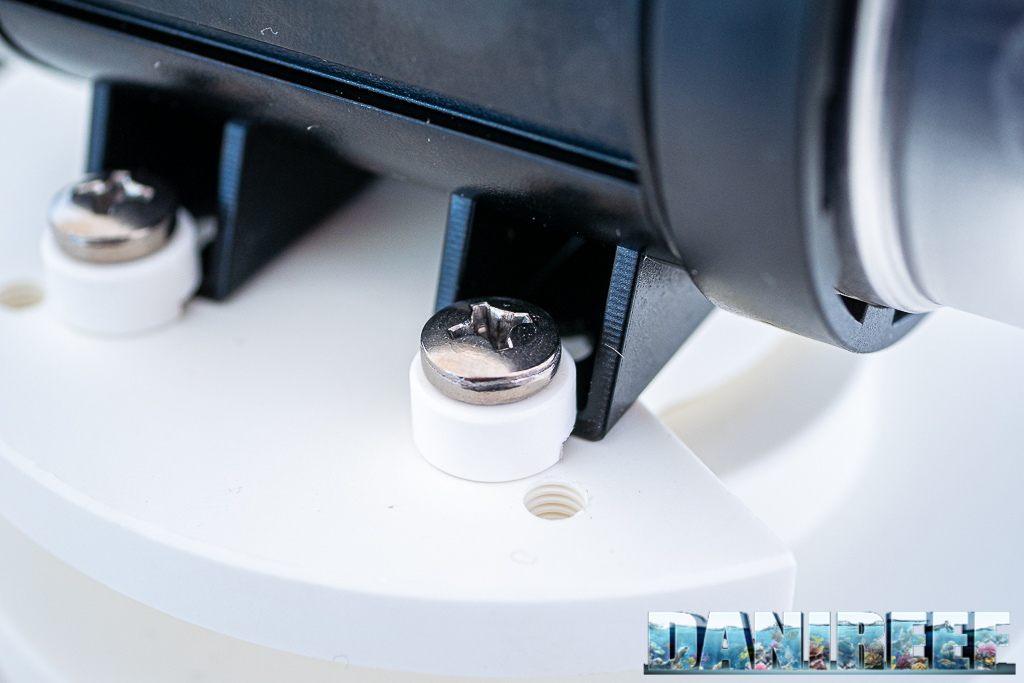
The sound level meter used for the measurement is the usual VOLTCRAFT 320, digital sound level meter IEC 651 of II type that is a very accurate tool. Given the nature of the noise, all the measurements have been done with the attenuation curve dBA.
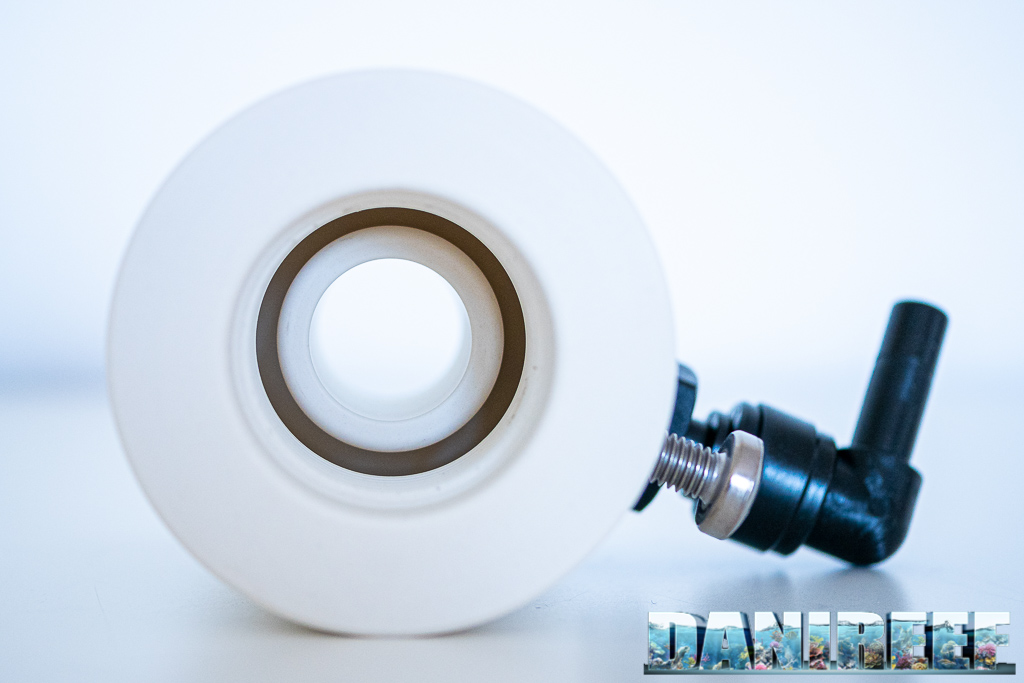
Maintenance costs
The skimmer UltraReef Typhoon UKD 200 has a declared consumption of 36 watts.
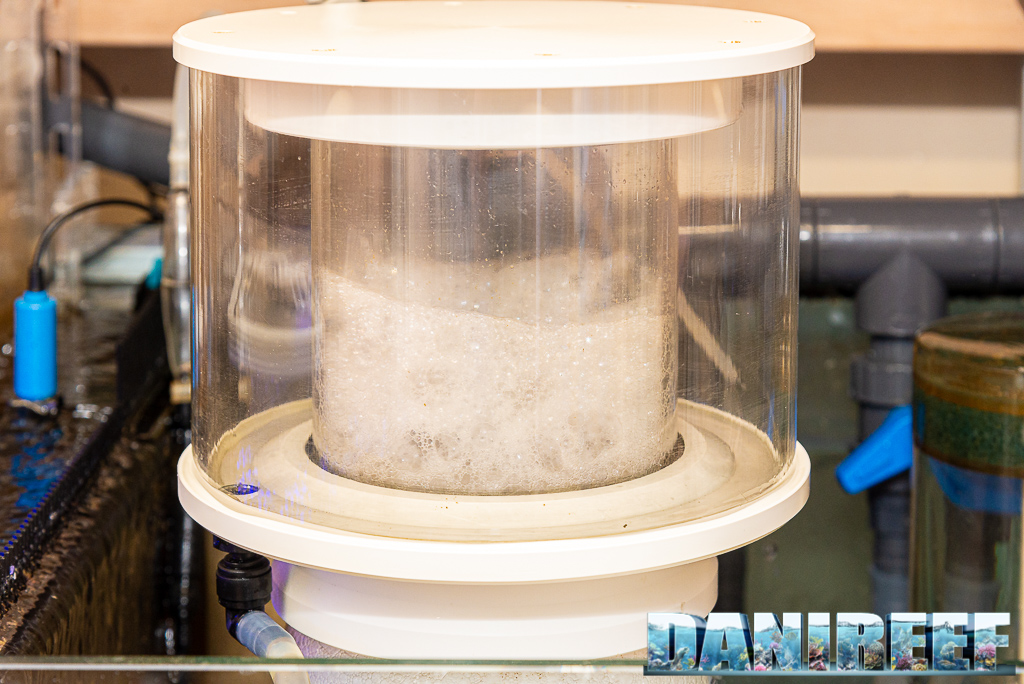
We have measured the consumption, too:

We noted a consumption slightly higher then declared: 40.72 watt. That is an annual cost of 96 euro, which is 0.27 euro per kwh.
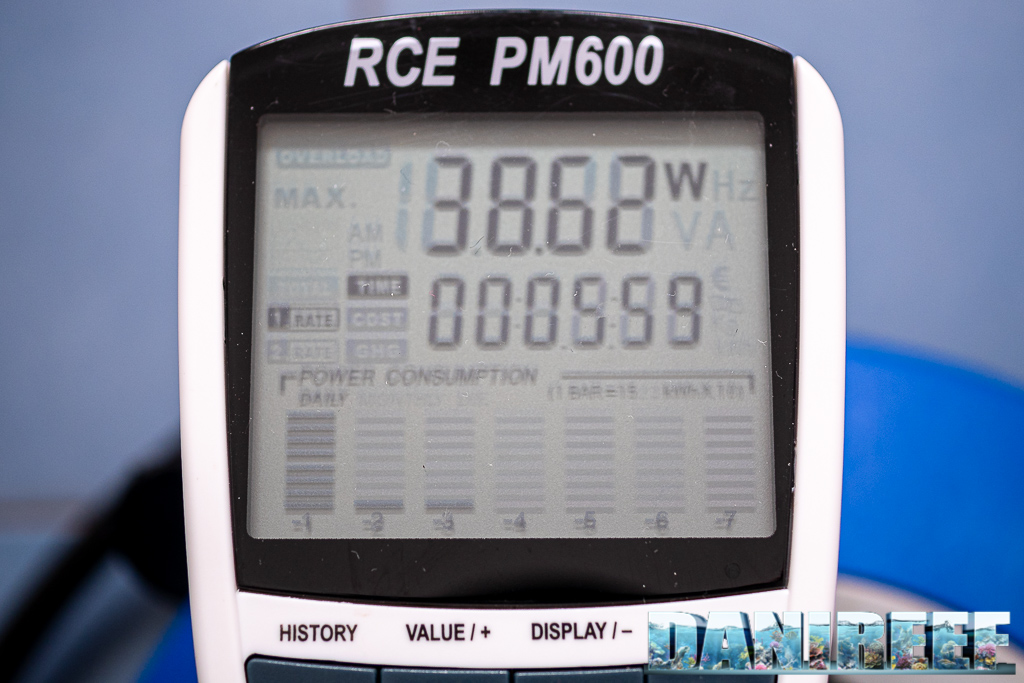
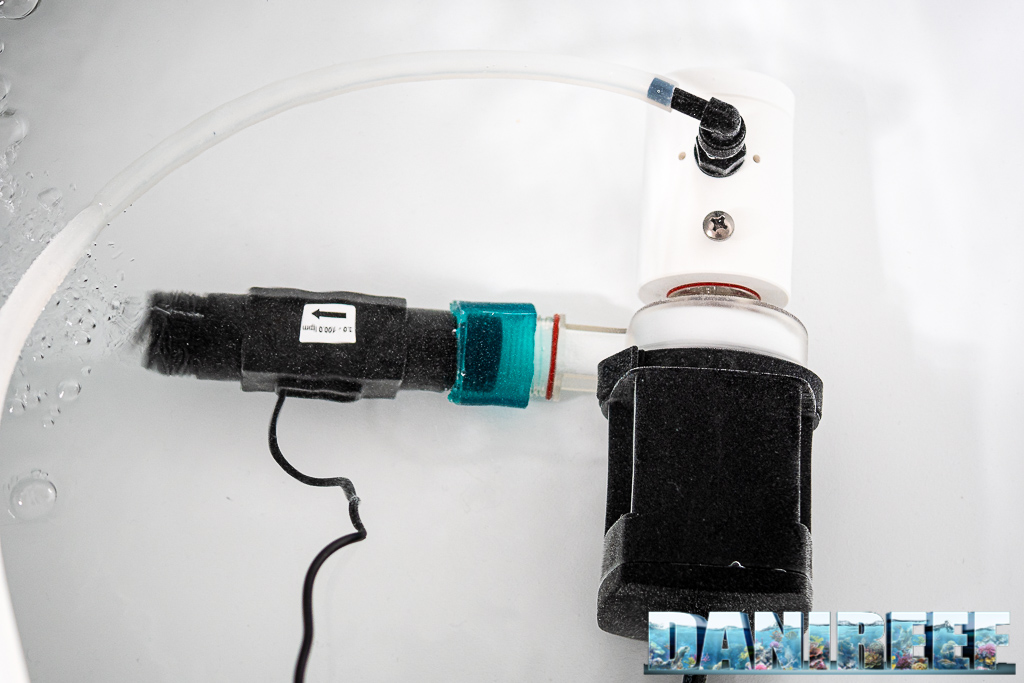
We also had the consumption of the tests we did in fresh water, and in that case the consumption was closer to the suggested one. The configuration is above.
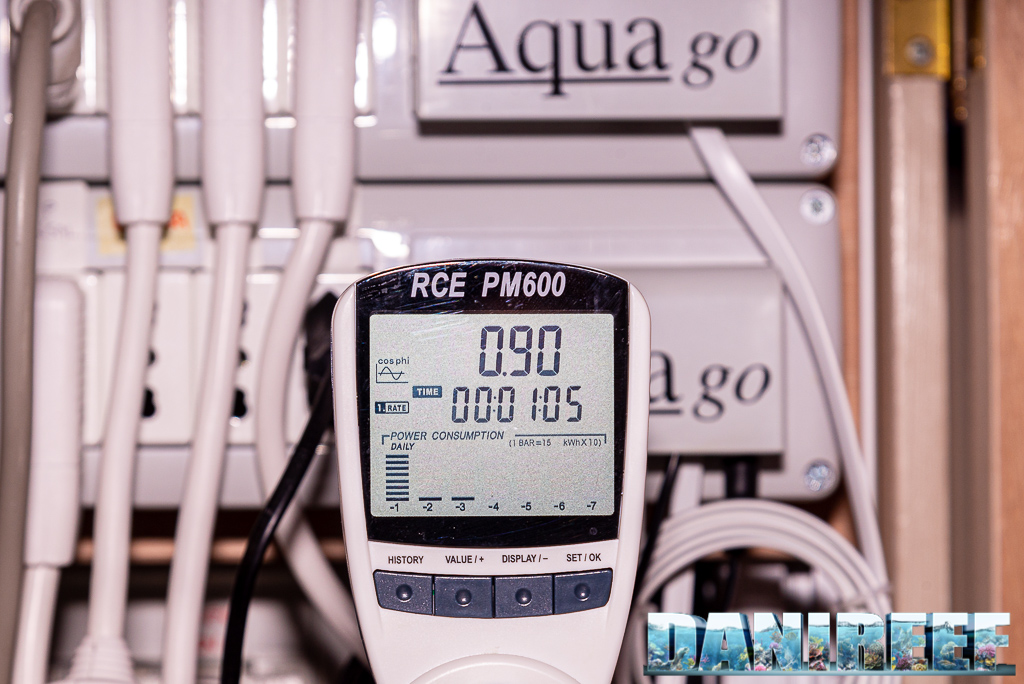
The value of the cos fi, or power factor, is great: 0.90. This means that even the pump will exchange less heat with the aquarium.
The video off the Ultra Reef Typhoon UKD 200 skimmer
This is the first time that we have included a video in a review of ours, Let us know what you think about it!
The conclusions and Jonathan’s words
Jonathan, what do you think of the Typhoon 200, after trying it for so long? I really like the skimmer, and for different reasons. The first impression I had was its toughness, top quality materials, and a perfect construction. It’s a pity that an object of this kind, totally white, is made by rough material that tends to get dirty. If you wanted to make it white again you’d have to wash it with diluted acid. But this is just nitpicking.

What do you think of this configuration with external pump? As with many other skimmers, I find it a very useful choice, both for the cleaning and because it increases the volume of the bubbles, that can start from the base of the skimmer itself. The pump is set in a way that creates a perfect vortex in the cone, you can see it yourselves if you turn on the pump while the skimmer is off. The bubbles rise fast and circularly.

How did you calibrate the skimmer? The pump is electrical so it’s adjustable, but I’ve always used at its maximum, with all the air and the drain open, in order to obtain the driest foam possible for my aquarium’s needs. The level the sump was already set on 21 cm so I didn’t intervene on the slider.

And if you had to find a flaw? I wouldn’t say any, but I’d like to ask Ultra Reef a question. In the skimmer there’s a drain for the foam that I used very rarely because I think it would be more useful a system for the cleaning of the neck of the glass, even if it had to be manual. I regularly drained the glass but after a week of use it’s dirty again and this compromises the foaming that is thick and abundant the first days. It’s true that I was used to the ATB skimmer (the review) that has automatic cleaning, so I came up to think about this feature. But I also remember that Ultra Reef had a mechanical or manual cleaning system in the past… that’s it, I wish it was proposed again (Ultra Reef Auto Skim)
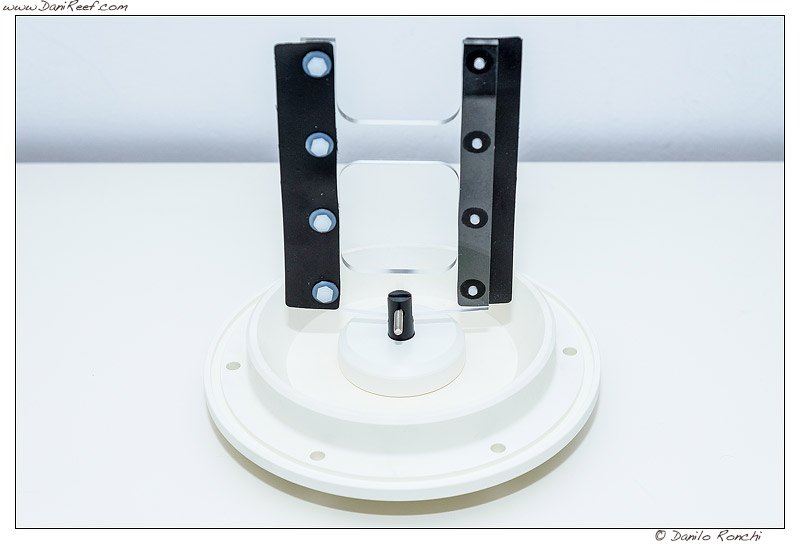
Would you like to add any other suggestions? If can ask… Considering a prolonged use over time, it would be great to have a float, because if you postpone the drain you risk it overflowing.

But speaking of the functioning of the skimmer, considering also the high performance it promises, how did you find it? The functioning is flawless. It foamed perfectly the first day and it’s still stable in its performance! It’s very quiet, and the column of water/bubbles is very thick. It seems almost a white pvc and not a transparent acrylic. This makes the foam dry and really thick, exactly what I needed.
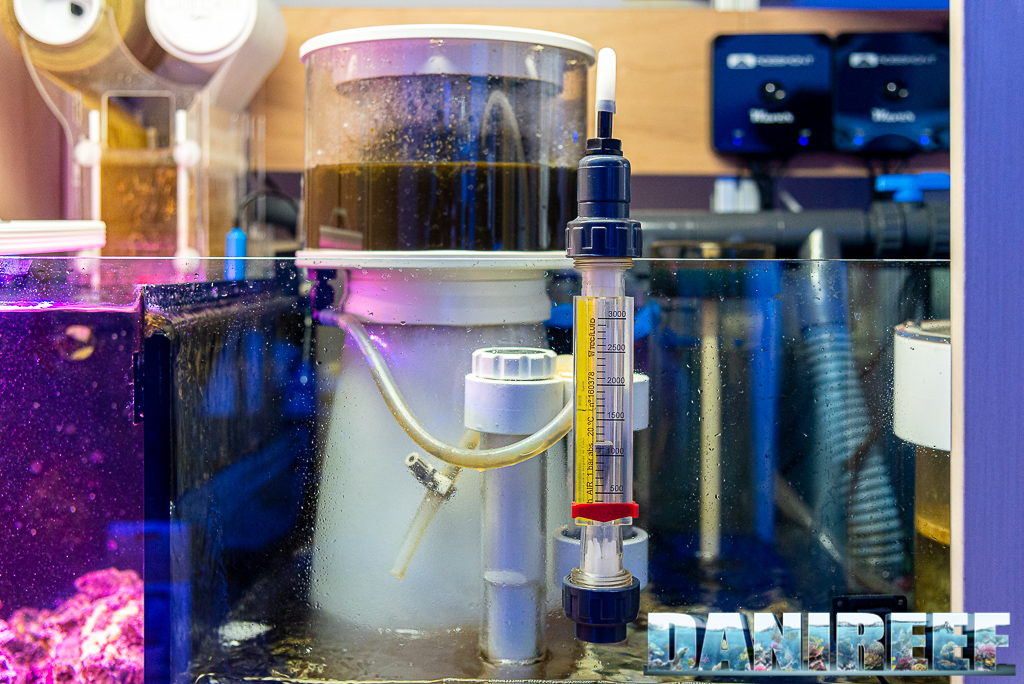
How would you like to conclude? I only have two small observations; they’re not flaws, but I’m pretty particular. The first one is that the air muffler doesn’t seal well. When I turn off the air the return the level rises over the muffler, it fills up with water and when the water starts again it doesn’t come out so you have to intervene opening and draining it out.
The other thing is that it would be great to be able to close the drain by screwing it and open it by unscrewing it.
This last remark makes me smile. I always mistake the verses 😀
Well, I have to say that, for my experience, this is the best skimmer I’ve ever had.
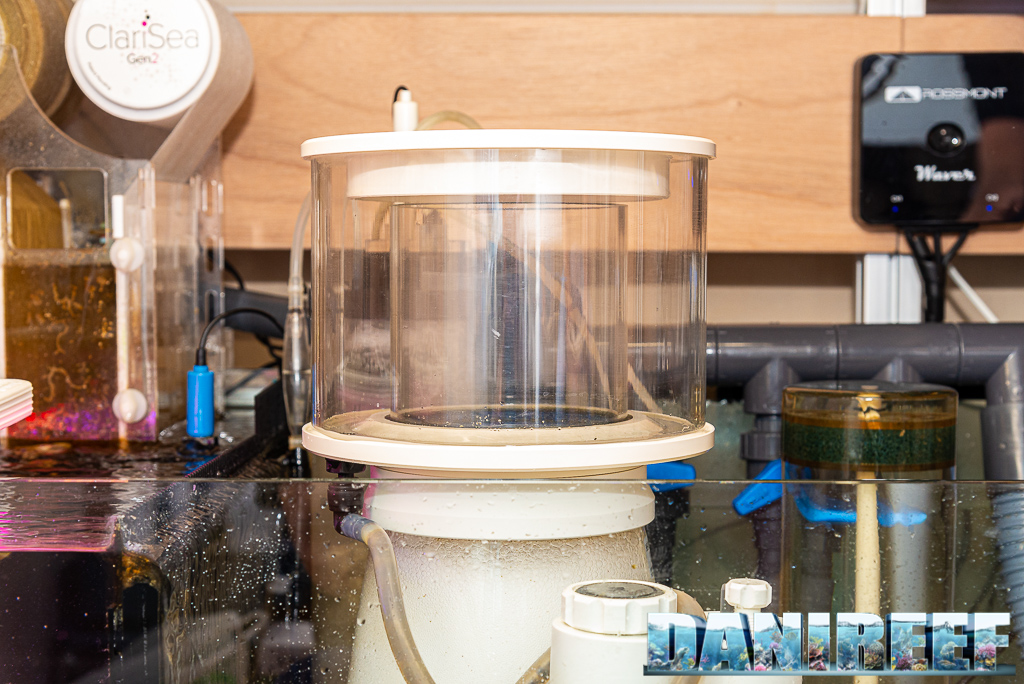
The cost
The skimmer UltraReef Typhoon UKD 200 costs 1019 euro. It’s a high price but absolutely justified by the build quality and performance. So perfect that we find defects in things that, objectively, are really secondary, and of which we normally do not even dream of mentioning.
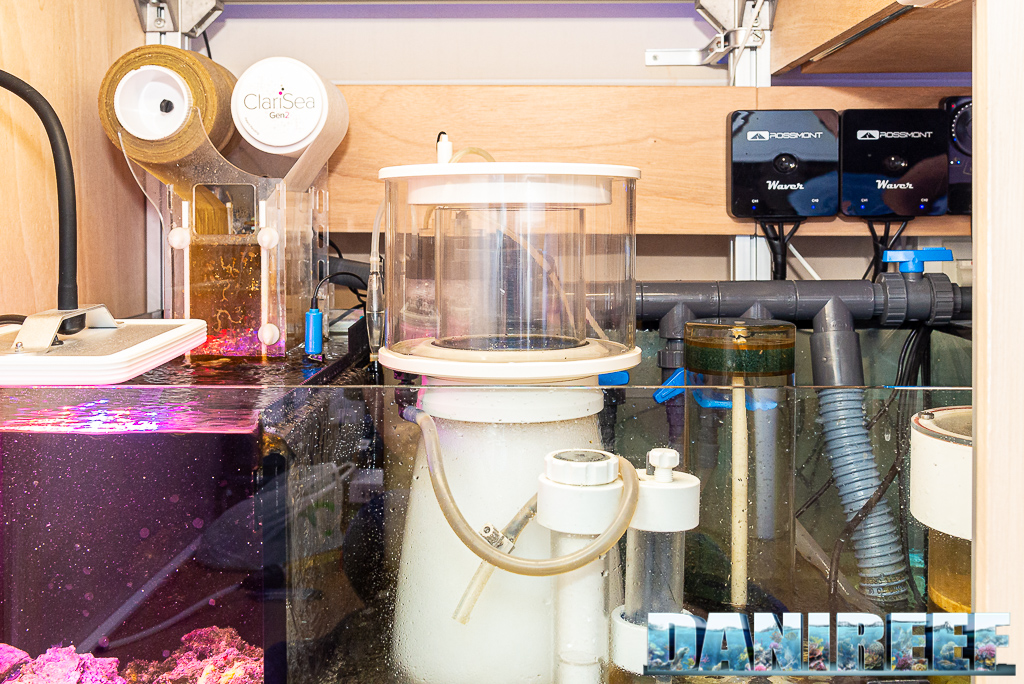
Conclusions
The skimmer is perfect. The value of treated air is great, same for the treated water, and it’s incredible that the declared data are the exactly what we measured. Ultra Reef recommends this skimmer for aquariums from 500 to 1500 liters, the former for aquariums full of corals, the latter for fish only. We agree. The construction is nothing less than spectacular, and we didn’t notice any problem, except for those details that Jonathan underlined.
During use, the skimmer showed itself to be regular, efficient, and unstoppable. The external pump is the flagship for every cleaning process.

PROS
 Very high value of treated air: 1,300 l/h
Very high value of treated air: 1,300 l/h Very high value of treated water: 2,600 l/h
Very high value of treated water: 2,600 l/h Very quiet
Very quiet Very well built
Very well built Very easy maintenance
Very easy maintenance
CONS
 Water in the muffler if the level in sump increases
Water in the muffler if the level in sump increases

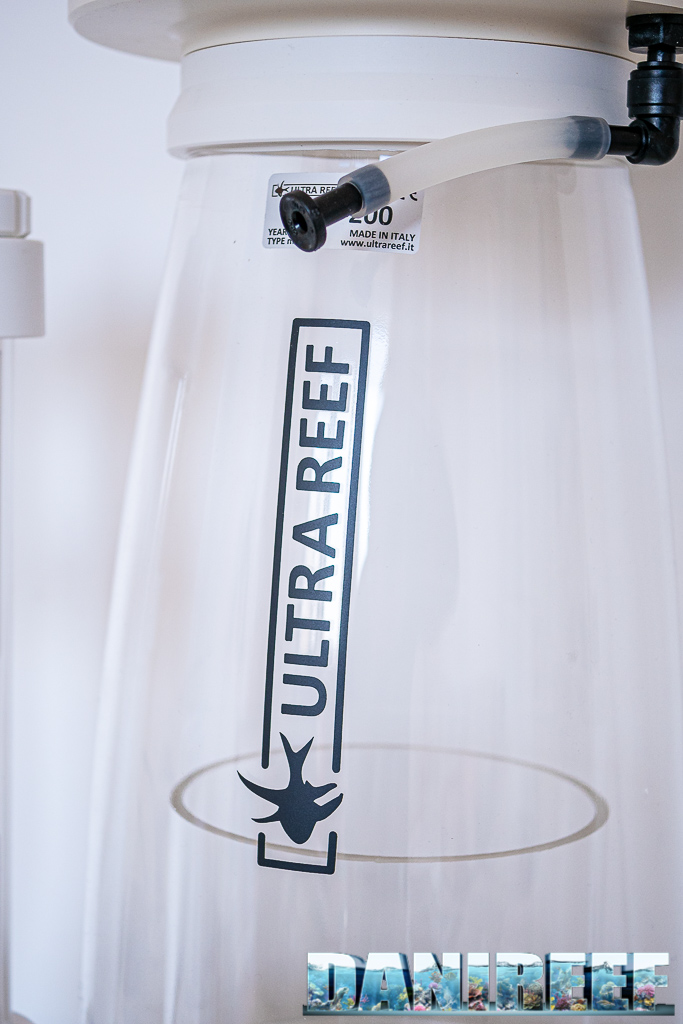
Disclaimer: we really thank Ultra Reef that provided us the skimmer for the tests that made this review possible
[translated by Agnese Poggi]








0 Comments